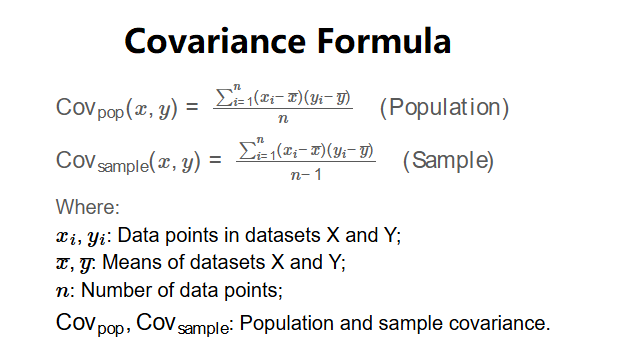 Home
Home
 Back
Back

Definition: The Covariance Calculator computes the covariance between two datasets, X and Y, measuring how the variables vary together. It supports both population and sample covariance calculations.
Purpose: This tool is used in statistics, finance, and portfolio theory to assess the directional relationship between two variables, aiding in diversification and risk analysis.
The calculator uses the following formulas:
\( \text{Cov}_{\text{pop}}(x,y) = \frac{\sum_{i=1}^n (x_i - \bar{x})(y_i - \bar{y})}{n} \quad \text{(Population)} \)
\( \text{Cov}_{\text{sample}}(x,y) = \frac{\sum_{i=1}^n (x_i - \bar{x})(y_i - \bar{y})}{n-1} \quad \text{(Sample)} \)
Where:
Steps:
Covariance is essential for:
Example: Calculate the sample covariance for X: [12.76, 12.35, 12.43, 12.70, 13.09] and Y: [7.06, 6.81, 6.88, 6.98, 7.35].
Q: What is covariance?
A: Covariance measures how two variables vary together, with positive values indicating movement in the same direction and negative values indicating opposite directions.
Q: Why use sample covariance instead of population covariance?
A: Sample covariance uses \( n-1 \) to correct for bias when estimating population covariance from a sample, providing a more accurate estimate for larger populations.
Q: How is covariance different from correlation?
A: Covariance indicates the direction of the relationship, while correlation (a unitless measure) also quantifies its strength.